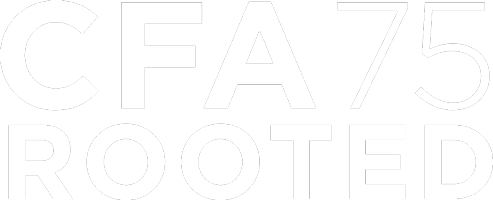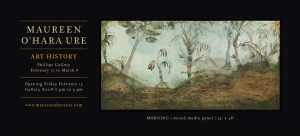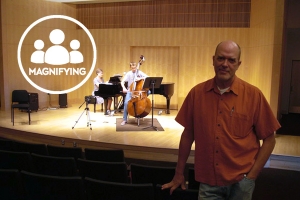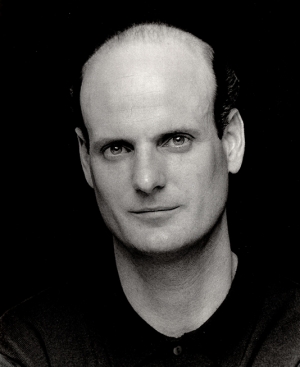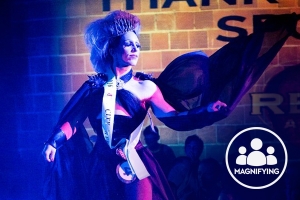Displaying items by tag: Professor
Maureen O’Hara Ure is a Professor Lecturer at the University of Utah, College of Fine Arts teaching Art 2400 for first year studio majors, Drawing I, and Senior Seminar. She has received many grants in support of her work, including the most recent one from the College of Fine Arts, which helped fund two large projects: "Love & Work", a solo show of paintings, and the publication of an artist’s book. "Seeing and Believing: A Traveler’s Sketchbook", the third volume to appear under her imprint, The Hand in Glove Press, features O’Hara Ure’s responses to the Romanesque art and architecture encountered in central France.
This year Red Butte Press has published "Stranger and Stranger", a bestiary composed of her images and poems by fellow University of Utah professor Katharine Coles, having collaborated for over three decades. O'Hara Ure's next solo exhibit, “Art History,” will open February 15th at Phillips Gallery.
“For almost 20 years, all my major projects have started off with travel, with my drawing in museums and at historical sites overseas. In each case, my travel sketchbooks have focused on pre-Renaissance art and architecture. I have returned to the studio and set about using the raw ideas in the sketchbooks to begin developing new work, feeling free to take liberties with the historical material I collected. Much of the work in “Art History”, my exhibit of new paintings at Phillips Gallery, is narrative. At some point in developing an image, I start to think of this or that beast or landscape as standing in for myself or for a family member in a kind of short story (or poem) that recalls love and loss, joys and sorrows.
Relying on a sturdy panel to hold up to months, sometimes years, of revisions, I slowly build up an image, obsessively laying down marks in thin, sanded layers of paint, ink, and pencil. When a panel returns to my studio from a show, I may begin to tinker with the image, perhaps first sanding out or painting over just a section. Often as not, I keep going and start all over, using gesso to erase any memory I have of the painting. I can see, for example, from my scribbled notes on the back of one of the oldest long panels in “Art History” that I first began to develop its surface in 2007, and three years later judged it finished and included it in my 2010 solo show at Phillips. After beginning to radically revise that painting last summer it is now unrecognizable, and, as “Panorama”, hangs here as part of this new collection.” —Maureen O’Hara Ure
WHERE: Phillips Gallery444 East 200 South Salt Lake City, UT 84111
WHEN: Opening 2/15, Gallery Stroll from 6-9P. The exhibition will be on display from 2/15 to 3/8
MAGNIFYING, No. 12: Dr. Mike Cottle
by Noelle Sharp
For this episode of MAGNIFYING we spoke with Associate Professor (Lecturer), Music Technology and Composition at the School of Music, Dr. Mike Cottle. Our creative community here at the College of Fine Arts is diverse and wide spread. With the goal of gaining a deeper knowledge and awareness of the people within our community, we bring you MAGNIFYING, a series dedicated to showcasing the talent of our students, faculty, and staff.
Tell us about yourself: Name, where you are from, what you do and how you got into in your field of work
I grew up on a ranch in northern Utah. I began performing on violin and guitar, emphasis in jazz. But my experimental nature and curiosity for technology led me to degrees in composition with emphasis in electronic music and now computer assisted composition.
What has surprised you the most in your life?
How rich, abstract, and complex such a simple notion of music is. For example, no one can agree on how to tune a piano. In our digital audio work stations, under the tuning preferences there are at least 100 different tunings. Most people are accustomed to the equal tempered scale, but many are not, and certainly musicians from Bach's era would cringe at our current tuning system. And other countries use systems that aren't even close to either our current system or that used in Bach's time. Recently this discussion led to a simple question: how many scales and tuning systems are there? A site named Scala is attempting to document this phenomenon and they have collected close to 45000, some with 45 to 70 notes per octave (where our keyboards have only 12). Even now, after three degrees, three books, and 20 years of teaching advanced composition techniques, I stumble onto something and think, you've got to be kidding.
What do you wish you had known/been told?
20 years ago, in a curriculum meeting, a colleague asked us all a question that made me a little ill: What can we teach students now that we know will still be useful in 20 years? I now ask myself, what did I learn during my degrees that is still useful? The answers are 1) creativity, problem solving, and how to learn and adapt, and 2) the fundamentals; those classes you hate, but have to take. These two are so critical when navigating the recent advances in technology. I still use my ears. I still use my mind. I still use basic theory. I still deal with frequency, intervals, scales, chords, consonance, dissonance, repetition, and variation.
Professor Gage Williams Celebrates Over 20 Years of Service in the Department of Theatre
by Adam Griffiths
Gage Williams has been a highly valued member of the Department of Theatre for 24 years and will be stepping down as Department Chair after serving in that role for the last 10 years. His expertise in stage design and film and TV production design have given him many experiences at the U, and at numerous professional companies, including the Idaho Shakespeare Festival, Great Lakes Theatre Festival, and Lake Tahoe Shakespeare.
Williams first discovered a love of theatre by chance his sophomore year at Arizona State University, when he signed up for a non-majors acting class in order to keep his athletic eligibility. He immediately found a deep love for theatre and gave up playing football shortly thereafter. “My early goal was to be a film actor, and I assumed acting was the path to take,” Williams said. “I did love the few roles I played on stage, acting class, and rehearsals. But deep down I knew I was not that good, and I was not progressing as an actor.” After three years of acting courses, he took a required course in set design, which felt like a natural fit for him. He then switched his major and finished his BFA in Theatre Design and Production at ASU, and then earned his Master of Fine Arts Degree from Southern Methodist University, where he was mentored by the famed Broadway musical design team of Bill and Jean Eckart.
During his time at ASU, Williams got a job as a technical intern at the Old Globe Theatre in San Diego, where he was eventually promoted to Resident Assistant Set Designer. He assisted world renowned designers such as Ralph Funicello, sitting in on meetings with Jack O’Brien, and even assisting on a set for the world premiere of Neil Simon’s Jake’s Women. He then moved to LA and worked as a TV Art Director for the production designer Bruce Ryan. During that time he art-directed the MTV Music Awards, the Soul Train weekly show, and countless shows for MTV, ABC, CBS, and NBC, and won a CableACE award for his art direction of the Showtime special “Mastergate.”
Williams has been a member of the United States Institute of Theatre Technology since 1997. This year at their annual conference, his set design was selected to be featured in the summer edition of the Theatre Design & Technology magazine. This is the third time since 1998 that he has been selected for publication. This year was the seventh consecutive year that he was able to travel with a group of theatre design and stage management students to the conference. He says, “It’s a wonderful five-day event, every year, with workshops, distinguished guest speakers, and an opportunity to celebrate design production and management for the performing arts.”
At the conclusion of this school year, Williams will be stepping down as Department Chair and will take a year-long sabbatical. What he has loved most as Department Chair is empowering faculty and staff to provide students with transformative learning and on-stage opportunities: “I have always looked for ways to protect faculty and staff from too much busy work that keeps them from teaching, researching, and serving. Those three areas are where faculty can have the most impact on students and the institution as a whole.” During his sabbatical he plans to use some time to re-examine his teaching strategies, spend time traveling, seeing theatre and film, and reflect on the next chapter in his professional life.
To any aspiring artist, he provides these words of advice: “Do the math! Don’t graduate without understanding healthcare, retirement investing, how to get a mortgage, and how to do a personal balanced budget. You need to know what a personal budget looks like at $20,000 a year or less, at $30,000 or less, etc. Remember, it takes a ten-year commitment to become an artist. When you start the clock is your choice. At the end of the ten years, evaluate and learn to need less during the next ten years, so you can put the majority of your time into your personal development as an artist. Don’t saddle yourself with debt for things that are not necessities. Being a starving artist is a real thing. Embrace it!”
MAGNIFYING, No.2: Shane Davis aka Janice Janice Janice
We spoke with School of Dance MFA graduate student and guest teacher Shane Davis, also known as Janice Janice Janice, about his evolution into dance, drag, teaching and self realizations about his true self.
By Noelle Sharp.
Tell us about yourself: Name, where you are from, what you do and how you got into in your field of work.
My name is Shane Davis. I also go by the performing name of Janice Janice Janice. I am most recently from Provo, Utah, where I attended Brigham Young University garnering a Bachelors of Arts in Modern Dance. I grew up near Seattle, WA, Houston, TX, and Albuquerque, NM.
What do I do?
Right now I am working on my MFA in modern dance and the graduate certificate in Gender Studies. I hope to be a choreographer for various venues, including music videos, Broadway and different dance troupes. Outside of academia, I perform as Janice Janice Janice around Salt Lake City. I have not become to proliferated in the Drag scene here in SLC but I hope to make my mark a little more pronounced in the coming months after graduation. I have been accepted as a performer at the Austin International Drag Festival which takes place in November. I am also currently teaching a course entitled "Dragging Gender into the 21st Century" that is a seminar type survey course that is part discussion of issues in and around Drag and part embodiment of the subject matter.
My sister Amanda, who is one of my best friends and mentor, encouraged me to go into both modern dance and Drag. I began my undergraduate career at BYU in the film program, but once one of my instructors said that my film art should primarily testify of Joseph Smith and Jesus Christ, I quit the program and drifted around for a couple of semesters. My older sister suggested that I take a modern dance class. I did and I fell in love. Years later, once I returned from an LDS mission and after coming out to Amanda as gay, she encouraged me to watch RuPaul's Drag Race. I got around to it and fell in love with that performance form and decided to try it out. I participated in the first (that we know of) Drag pageant in Utah county and won second place. I have since been involved with the scene here, and have won first place at the Miss City Weekly pageant that kicks off pride weekend each summer.
I decided to come to grad school after working a year in a dead end job after graduation with my undergraduate degree and I had a panic moment. That that job was not what I wanted to do with my life. I had more to learn. So I begged the director of the MFA program to allow me to audition (as I was a few months late) and the modern dance faculty granted me an audition and accepted me. I then also discovered the Graduate certificate in gender studies and decided to pursue that as I lacked sophisticated and critical thinking on the topics of sexuality and gender. I wanted to fill in holes of my understanding and to push my thinking.
What has surprised you the most in your life?
Uhf, that I'd be here of all places. Five years ago, I was still immersed in Mormonism and trying to adhere to their standards of compulsory daily drag. I had even gone back into the closet, telling my parents to disregard my previous coming out and that I was going to date women and make things work out in the path that they had chosen for me from the time the first ultrasound dubbed me a "boy." Now to see a crown and trophy hinting at my wins in a somewhat subversive art form, and also teaching a university course on Drag, is a tad surreal. I have traded in my missionary ties for high heels.
What do you wish you had known/been told?
I know this is kinda out of left field (what... a sports reference?), but I wish I had know or been told that I was not a freak and that I was ok to not be the same as the other "boys." I wish I had known that there were many ways to be a person in this world and to not have the yearning to put myself in a restrictive box. I wish I had come out at an earlier age and been stronger in my sense of self. I wish I had known about queer and feminist theories. Theorizing can be therapeutic and healing. I wish I had known that it was ok to experiment, ok to be fluid, and ok to fail.
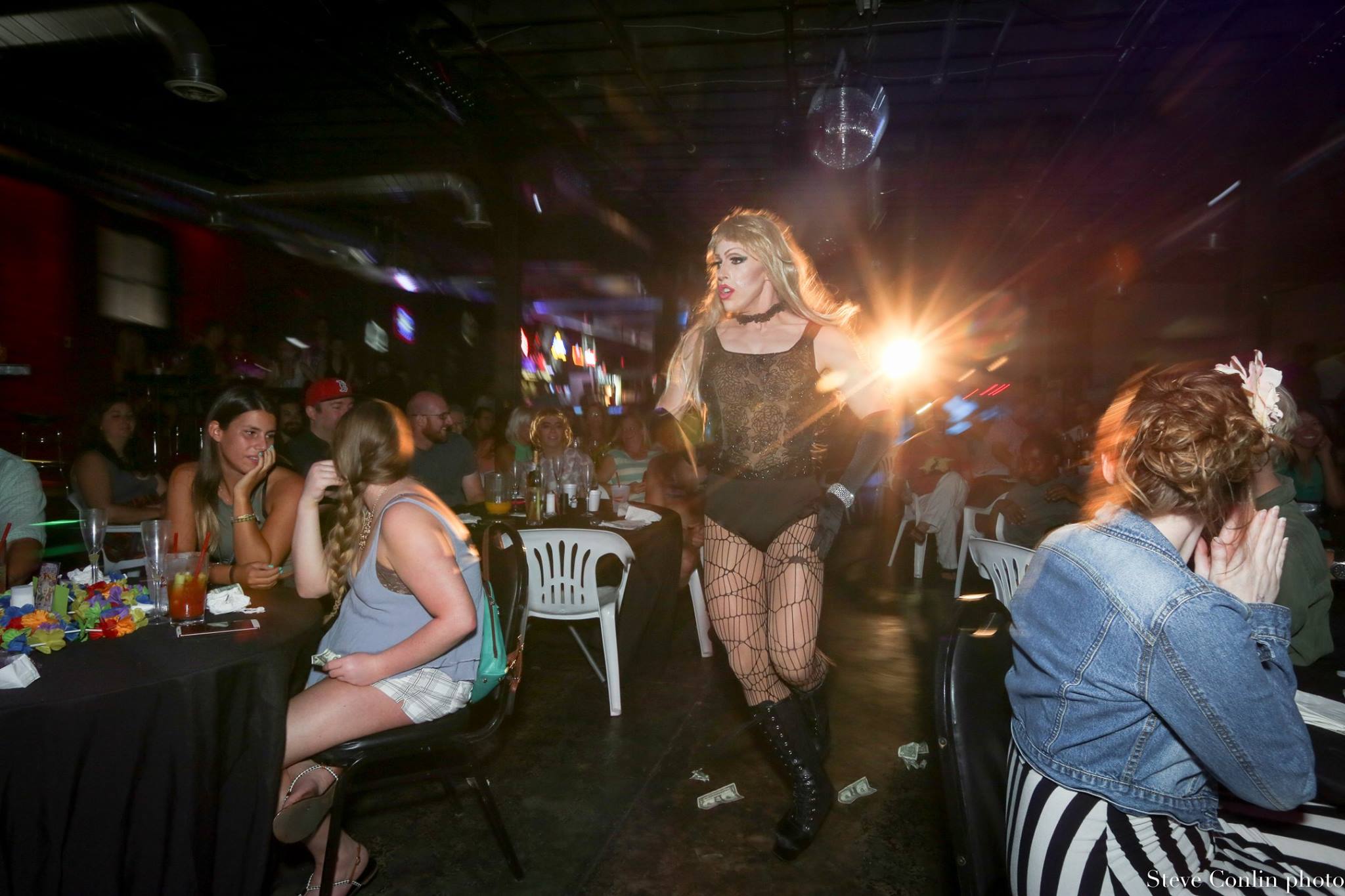
Read about Davis's "Dragging Gender into the 21st Century" class here. Photos courtesy of Shane Davis. Photo credits: Anna Day @moabchica, Steve Conlin @steve_conlin_photo, and Gilbert Garcia @instaguygil
Interested in contributing to this series? Contact Noelle Sharp.

